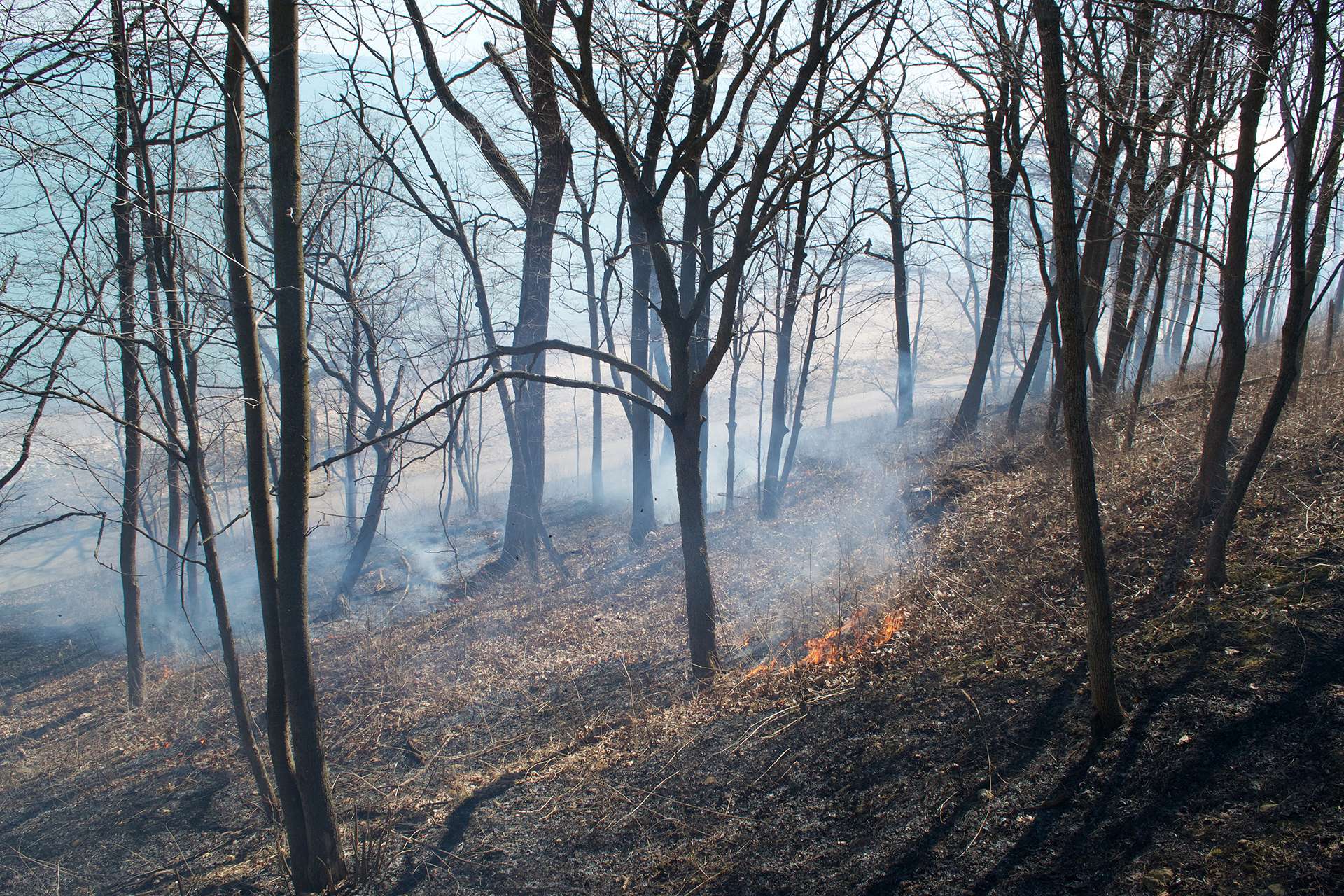Through restoration, Openlands connects the dots of nature. Our work brings sunlight to developing trees, fish and amphibians to streams, birds to the shore and canopy, and people to the land. Such is our mission, to connect individuals and communities to the natural world in which we all live.
Openlands Lakeshore Preserve
Visiting the Openlands Lakeshore Preserve for the first time is truly enchanting. As I walked out to the lookout on my first trip, the fog seemed to peel away from the water and I remember thinking to myself, “This is Lake Michigan.” I had seen the Great Lake many times before, but never like this. The melody of the gently rising and falling waves against the pale sand was truly hypnotic. It was quiet. There wasn’t a soul in sight, and yet life was all around. Shorebirds scuttled in the brush, mergansers paddled offshore, and I sat and watched.
Since the fall of 2011, the Openlands Lakeshore Preserve has provided northeastern Illinois with rare access to nearly 80 acres of shoreline and ravine ecosystems. In December 2015, Openlands announced a 5 year project to reestablish lost habitat across the Preserve. With funding from the Grand Victoria Foundationand a partnership with the U.S. Army Corps of Engineers, we have spent the winter months removing an array of non-native and invasive tree species that have dominated the area and choked out native trees. The removal of these invaders allows native plant and tree species to flourish without having to compete for sunlight.
As the winter comes to an end, the spring phase of the restoration plan is set to begin at the Southern end of the Preserve, in Schenck Ravine. Thriving ravine ecosystems are phenomenally important, as they provide pools and riffles that organically manage stormwater, reduce erosion, and serve as habitat for local fish.
Lastly, we will also work to restore portions of the southern bluffs as well as the endangered marram grass which, when healthy, works to bind loose sand – a process that is essential in forming and maintaining the dunes that separate the bluffs from the lakeshore. Healthy dunes means more stable bluffs which, in this case, acts as a landing zone for hundreds of species of migrating birds.
As Openlands continues to restore the area, more and more people become connected to the land. This connection can already be seen throughout the Preserve, but perhaps, particularly, when walking through the shaded trails. Where the brush has been cleared, new trees and wildflowers are being planted ensuring that people will experience the enchantment I enjoyed on my first visit to the Preserve.
Deer Grove West
Like the Preserve, the Deer Grove West Forest Preserve was equally engulfing – literally the minute I arrived I spotted three, maybe four species of birds before I was even out of the car. As I ventured further into the area, the magnitude of restoration really hit me. Looking around, all sorts of dense brush was being cleared, giving way to new life. Previously, this brush was very obviously suffocating juvenile trees that were desperate for sunlight. These trees would soon find new life, which they would share with the birds, the frogs and with visitors like me.
Nearly 100 years ago, the Deer Grove preserve became the inaugural piece of land acquired by the Forest Preserves of Cook County. For years it served as an oasis for various species native to our region.
In 2008, Openlands partnered with the Forest Preserves of Cook County, City of Chicago Department of Aviation, and the U.S. Army Corps of Engineers and began the savanna, prairie and wetland restoration efforts on the eastern half of Deer Grove. Deer Grove East once again boasts several wetland areas as well as vast rolling prairies and open oak savannas.

Finally, in 2015, we announced that Deer Grove West would be next – just in time for its 100th Anniversary. Over the next several years, a $3.15 million restoration plan will be implemented to restore a robust ecosystem, that, when finished, will support more than 300 species of native woodland plants, as well as a wide variety of birds, reptiles, amphibians, and mammals.
Similar to the work being done at the Openlands Lakeshore Preserve, much of this focuses on clearing invasive species and reintroducing native plants. We will also be performing controlled burns. Burning is a natural process that has been a part of the Illinois landscape for thousands of years. It stimulates the development of native plants, which in turn provides healthy habitat for new life throughout the ecosystem.
